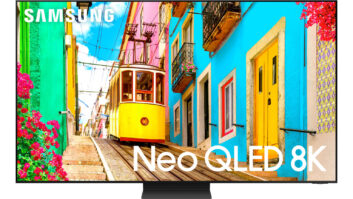Mitsubishi announced to dealers here that it has dropped analog NTSC-only television sets from its 2002 line, and would again distribute a plasma display panel and a pair of HDTV monitors with screens configured for the 4:3 aspect ratio.
At the same time, the company officially announced it would distribute this fall its “Promise Module,” an ATSC tuner and digital connecting package, through authorized Mitsubishi service technicians. The module incorporates the IEEE-1394 digital interface, a host of analog connectors, an over-the-air ATSC DTV broadcast tuner, and QAM digital cable support. Also added is full support for home networking systems including HAVi Level 2 and DTCP copy protection over 1394 digital wiring. For ease of use, the module includes high-end onscreen menu displays with icon activation.
Due to possible “digital content protection” issues, the module must be professionally attached to the rear of any of its HDTV monitors. The module will retail for “less than $1,000, including installation,” the company said.
The announcements came at a dealer show here, where Mitsubishi celebrated its leading DTV market share status. Mitsubishi marketing VP Bob Perry said the company now enjoys better than 55 percent share in digital television, and plans to hold onto that position by investing in new technologies and product development timed to meet market demand.
To underscore the point, he cited Mitsubishi’s return to the plasma display panel category with a 50W-inch HDTV model (HD-5010). Another manufacturer builds portions of the flat-panel display to Mitsubishi’s specifications, Perry acknowledged. He said the plasma panel uses a single proprietary cable connection, “MonitorLink,” to a separate tuner module (HD-5000), which will carry connectors for outboard video sources as well as NTSC and ATSC tuners and circuitry for onscreen guides.
It also employs Mitsubishi’s expanded second generation NetCommand home networking system with IEEE-1394, HAVi and DTCP content protection. An advanced video scaling system is built into the panel to up- or down-convert video signals to the screen’s 1365×768 native display, Perry said.
The HD-5010 plasma display will ship this fall at a $18,000 suggested retail.
Mitsubishi was the first company to announce plans for consumer-level plasma display panels several years ago, but ultimately dropped the category — and its own production of plasma products — citing the early hardships of producing panels that could be sold to consumer audiences.
Max Wasinger, Mitsubishi senior VP/sales and marketing, stressed the company’s decisions to first exit and then re-enter the plasma category were based on optimal market timing “and doing what is right for the customer.”
As for Mitsubishi’s crusade to pioneer 1394 Home Networking systems, Perry said new legislation will soon surface in Congress to prevent broadcast television signals from being put on TCPIP computer networking connections, which should spur 1394 support, he said.
“Because 1394 has DTCP, [broadcast programming] clearly can go right on a 1394 home network. So you are going to see a very strong transition to 1394 home networks as a result of this legislation that we are going to be seeing soon.”
Perry said Mitsubishi decided to re-introduce 4:3 digital projection televisions at the urging of a number of its dealers.
“Consumers are shifting quickly to 16:9 sets in terms of projection TV, but our analysis shows there is still a segment of consumers who want 4:3 sets, and they want digital capability,” Perry said. In explaining the company’s decision to drop analog projection TV, Perry said aggressive price declines in digital rear-projection monitors has squeezed profitability out of the analog models.
“A lot of manufacturers are stopping the manufacture of analog projection televisions, like us, and the few that are left are operating at very slim profit margins,” Perry said. “Those slim profit margins translate directly to the dealers’ bottom line.”













